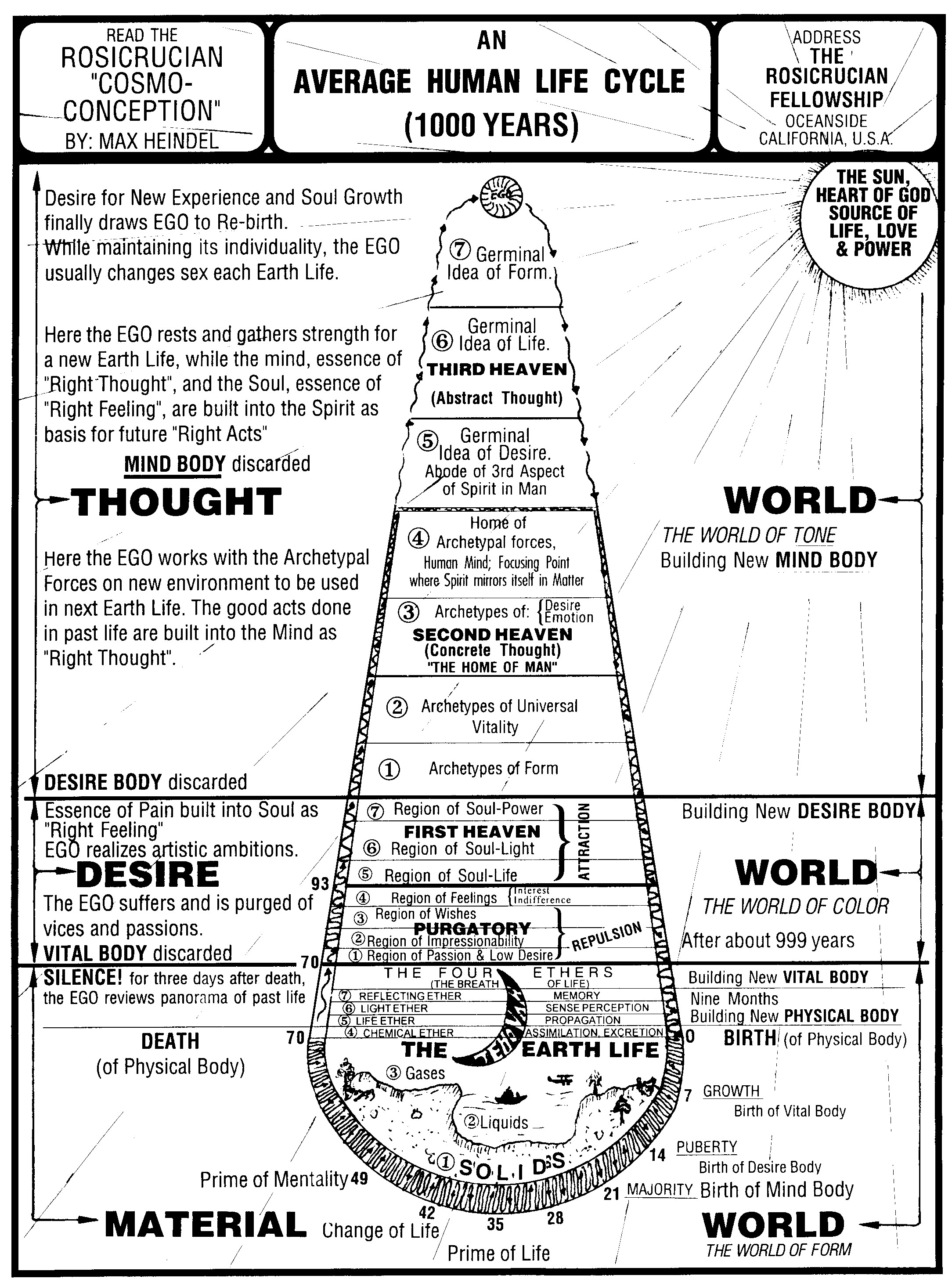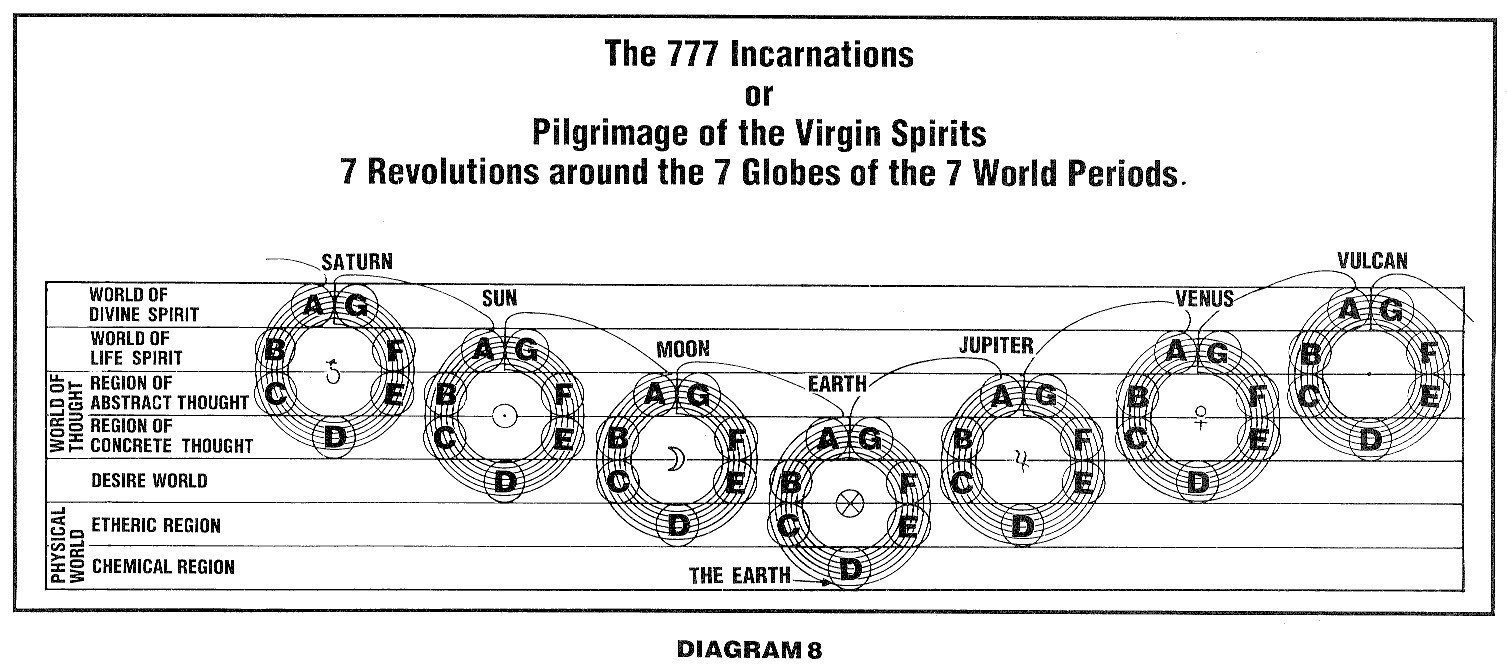
| rosicrucianU.com | ||
| Simplified Scientific Christianity |

Question: Many people realize these days that we are entering, or about to enter, a new age. Some understand that it is the Aquarian Age, and to a certain extent what it stands for. However, I have not as yet heard an intelligible explanation of just when our Earth or solar system would enter this age, and whether the Aquarian Age coincides with the passage of the Sun through the constellation Aquarius or through the zodiacal division by that name. (Vol. II, #110)
Answer: In this paragraph our correspondent takes up a number of points, and on the principle that "the last shall be the first," we shall first consider the last part of his question, where he makes a distinction between the constellation Aquarius and the zodiacal division by that name. This, in itself, is a great difficulty to many people, who do not know how to differentiate between the zodiacal constellations and the so-called intellectual zodiac. The explanation is as follows: A certain group of stars in the heavens is called Aries; another group, located close to them, is called Taurus; a third group of fixed stars is called Gemini, and so on. These twelve constellations, or groups of stars, as seen in the heavens, always remain in the same relative position, and they are therefore unchangeable.
Through all the centuries of which we have record, these stars have remained in the same group and in about the same relative position, one to another. Through these constellations the Sun circles from year to year with unvarying precision, but owing to the fact that the axis of the Earth inclines toward the Sun and has a wobbling motion, similar to that of a spinning top which has almost spent its force, the motion of the Sun appears to be uneven. Each year, when it enters the constellation Aries, crossing the Earth's equator, it is a little earlier than the year before. It precedes. Thus the point where the Sun crosses the equator at the vernal equinox moves backwards from year to year at the rate of one degree in seventy-two years, one constellation in 2,100 years and the whole twelve signs in 25,856 years. This latter period is called a Great Sidereal year.
It has been observed that no matter where in the zodiac the Sun crosses the equator, a certain physical effect takes place. The flowers begin to sprout out of the Earth, the birds begin to mate, the mute Earth awakens to new life, new hope, and new song. Also the spiritual effects following the Sun's entrance into the Northern Hemisphere at the vernal equinox have been observed to remain unchanged. Therefore the first thirty degrees from that point, where the Sun crosses the equator, are called Aries, the next thirty degrees are called Taurus, the third thirty degrees are called Gemini, and so on through the twelve signs.
This intellectual division of the circle of the zodiac coincides with the constellations in the heavens only once in 25,856 years. During all the rest of the time the intellectual zodiac moves backwards, as explained, on account of the precession of the equinox. The last time when the starting point in the intellectual zodiac agreed with the zodiacal constellation was about 500 A.D. A year after these points were in exact agreement, the Sun crossed the equator about fifty seconds of space in the constellation Pisces. The year following it was one minute and forty seconds into Pisces, and it has been creeping backwards ever since, until at the present time (c. 1910) the Sun crosses the equator in about ten degrees of the constellation Pisces. It will thus be about 700 years before it actually crosses the celestial equator in the constellation Aquarius.
The Aquarian Age may be said to start at the time when the Sun enters, by precession, the 30th degree of the constellation Aquarius, and it lasts 2,100 years, while the Sun moves backwards through the thirty degrees until it comes to the first degree of Aquarius. There is, however, no definite and sharp cut- off such as we make when we say we enter the year 1915, which begins at twelve o'clock on the night of the 31st of December, 1914, and lasts until the 31st of December, 1915 at 12 o'clock midnight. That is a mathematical division of time. The various epochs of human existence depend upon vital influences in life, and are conditions of mind rather than divisions of time, though the two are linked.
Therefore, astrologers recognize what is called an "orb of influence." To understand this, we must realize that every human being is something more than that which we see; that he has surrounding him an aura, an invisible atmosphere, a something which radiates from him and which partakes of his distinct and personal nature. We very often feel the effect of this aura though we do not understand the reason why. Suppose that someone has his whole mind concentrated upon his work so that he neither hears nor sees what happens about him. Gradually he becomes aware that someone else has entered the room— is, in fact, standing behind him—and he turns around to find a friend there. He had not heard the friend enter on account of absorption in his work, but he felt him, because the aura of the friend intermingled with his own auric atmosphere. Thus, though there was no physical contact, he knew that someone was close by.
The constellations are groups of great Spirits who have immured themselves in these starry bodies, for the sake of less advanced intelligences to gain the experiences of evolution. Each of the fixed stars in a constellation also has its invisible bodies, which extend from one to the other, intermingle, and overlap. Therefore, when the Sun reached the 10th degree of Pisces, it touched the fringe of the influence of the constellation Aquarius, though we are still in the Piscean Age.
That this influence is making itself felt, a glance of retrospection will soon show. We readily recognize the Piscean influence during the last 2,000 years. The dark ages, the superstition and intellectual bondage then prevalent, are not entirely routed, but since the middle of the last century, when the Aquarian influence first began to make itself felt, an irresistible intellectual impulse has been instilled into our everyday life. Science has made such strides as never before. Invention has electrified the world and is now conquering the air, etc. This scientific intellectual influence will make itself felt more and more during the centuries which will pass before we definitely enter the constellation Aquarius by precession of the equinox. As the narrow, conservative Piscean influence diminishes, so will the broadening, inquiring Aquarian influence increase.
Regarding what the Aquarian Age stands for spiritually, we may realize that Aquarius is the only figure in the zodiac representing the full stature of a man. All the principal characters of the Old Testament were shepherds, having reference to "Aries," the sheep, ram, or lamb. In the New Testament they are fishermen, referring to Pisces, the sign of the fishes, but the Son of Man is the subject of prophecy; of something yet to come. He is to usher in a glorious age, and therefore we may look for developments of a startling nature to take place in the nearest centuries before us.
Moreover, each of the foregoing ages has had its teachers. Osiris and Mithras were worshiped in Egypt and Persia, while the Sun was going through Taurus, the sign of the Bull. The Lamb was slain from the foundation of the Christian world, by Moses, while the Sun was going through the sign Aries. There was a great controversy concerning the symbol of Christ, on account whereof the Bishop's mitre is still made in the form of a fish, to symbolize the fact that the phase of the Christian religion then inaugurated was to hold sway during the Piscean or Fish Age, in which we now are. Later the ideal of the Son of Man, or Superman, will furnish inspiration for the Aquarian Age, which is now being ushered in.
The Aquarian Age is not to be confounded with the kingdom of Christ, who is to come again. Neither is the Aquarian Age to be confounded with the Sixth (Galilean) Epoch, for to quote the words of Christ, "Of that day and hour (when He comes), knows no man; neither the angels in heaven, nor the Son, but only the Father." It is absolutely preposterous and a mark of ignorance for anyone to predict that the coming of Christ will take place at a certain, specified time. Perhaps it is even presumptuous to guess at the approximate time when the Second Advent will take place, but the writer has the idea that, as the precessional cycles, so far as they are connected with the evolution of man, seem to commence with the Sun's entrance into Capricorn, there may be a development at that time. If that is correct, the Advent cannot take place for at least 3,000 years.
— This article was adapted from "The Rosicrucian Philosophy in Questions and Answers, Vol. II," by Max Heindel.

|

|

|
|
|
Contemporary Mystic Christianity |
|
|
This web page has been edited and/or excerpted from reference material, has been modified from its original version, and is in conformance with the web host's Members Terms & Conditions. This website is offered to the public by students of The Rosicrucian Teachings, and has no official affiliation with any organization. | Mobile Version | |
|